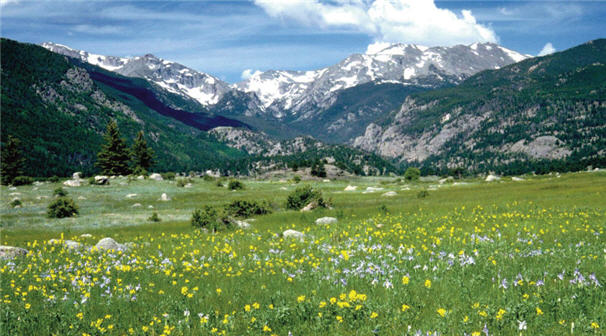The tent is up and a small fire is cracking in the ring; above you, millions upon millions of stars shine. Even the crisp breeze in the air is cause for a smile. If for nothing else, it will soon make your warm sleeping bag all the more enticing; once you put down that one last s’more, of course.
Nights like this, spent camping can easily become some of summer’s finest. But, like so many of the best weekends, the ones spent camping take preparation. Sure, you can just throw a tent and some snacks in the back of the car and head toward the mountains, but that won’t guarantee a great camping experience. Wise adventurers begin planning months in advance by picking a location—based on factors like site access, group size, experience and ability. And, when the trip is still weeks out, the prepared turn their attention toward an assessment of the gear they have and what they might need. Then, with just days until the car pulls out of the driveway, the organized take that seminal trip to the grocery store, leaving enough time to fit it all in the back of the car or, even better, into a backpack. From there, there’s only one thing left: Point yourself in the direction of the 265,828-acre Rocky Mountain National Park.
Each year, roughly 3,000,000 people visit Rocky Mountain National Park, located just 75 miles northwest from Denver. That number alone can give the impression that campers are likely to have the hum of a generator keeping them awake at night or, worse, experience the disappointment that comes with arriving at a campground only to find every last spot already taken. However, at Rocky Mountain National Park, there are 575 car accessible campsites spread over five campgrounds. Step off the paved road a little and there are another 267 backcountry campsites available for use via a permit system that often requires a reservation as well.
For those who don’t have any experience backpacking, planning a trip into the park couldn’t be easier. Each summer, the park employs 15 rangers in its Backcountry Office whose twofold responsibility is, “to make park visitors’ backcountry wilderness dreams come true, and preserve that wilderness in a near pristine state,” according to Backcountry manager, Barry Sweet.
Sweet, who has been running the park’s backcountry office for more than 20 years, believes that the park is as inviting of a natural place as there can be found because of its successful permit system. “It’s nature at its finest along the Continental Divide,” he says. And to keep it that way, Sweet and his staff ensure that backcountry visitors minimize their impact on the land by limiting the number of campers spread across the different sites. Most of the nearly 300 sites in the backcountry allow for just one or two groups to make camp there each night, and group size is limited to a maximum of seven people. The backcountry staff also works to match each group with the correct site depending on their experience, ability and desires. “We want each group heading out into the backcountry to make use of this service,” says Rocky Mountain National Park management specialist Kyle Patterson. “Their main purpose is to help people plan their trip whether that be over the phone or when you stop in to pick up your backcountry permit. They can help with everything from length of stay and site preferences to the weather conditions and trailhead directions.”
Sweet and his crew are also a good source of tips for both first-time and return visitors to the park. From the more obvious: during busy summer weekends visit the park’s west side, which routinely receives less visitors each year, meaning more open campsites and parking spaces. To the more personalized: Sweet recommends beginning backcountry campers start out at either the Rabbit Ears, Summerlin Park or Old Forest Inn backcountry sites, while the more experienced should consider reserving the Lost Lake, Thunder Lake and Lawn Lake sites. As for his personal favorite, after all these years, Sweet says he still loves the Bear Lake area each time he sees it.
WHAT TO BRING
Barry Sweet, the Backcountry Office manager at Rocky Mountain National Park, started as a ranger in Yellowstone National Park before moving to Colorado in 1987. In his more than 20 years at Rocky Mountain, he’s watched over what he calls the, “most inviting place to become refreshed and relaxed.” And to make sure your relaxation doesn’t get interrupted by the inconveniences and hazards associated with a backcountry camping experience, Sweet recommends every backpacking checklist include the following 10 items.
- Sleeping bag with appropriate seasonal rating: It’s the difference between a good night’s sleep and a cold night’s ache.
- Storm gear: Even when the forecast doesn’t call for it.
- Hat and gloves: It’s always colder up in the high country.
- Sunglasses with good UV and IR rating: The elevation gain exposes your eyes to more harmful rays.
- Sunscreen with strong SPF rating: Because sunburns under a backpack hurt even worse on the walk back.
- Topographical map with compass: It’s a big park with a lot of trails running through it.
- Water purification system: Filters, tablets, lights, make sure you have something for cleaning your drinking water.
- Bear canister: Much easier than hanging your food and trash from a tree limb.
- Camp Stove: Fires are allowed in only a few designated backcountry sites that have metal fire rings.
- Common Sense: Don’t start down the trail without it.
FOR MORE INFORMATION
970.586.1206, nps.gov/romo
970.586.1242


